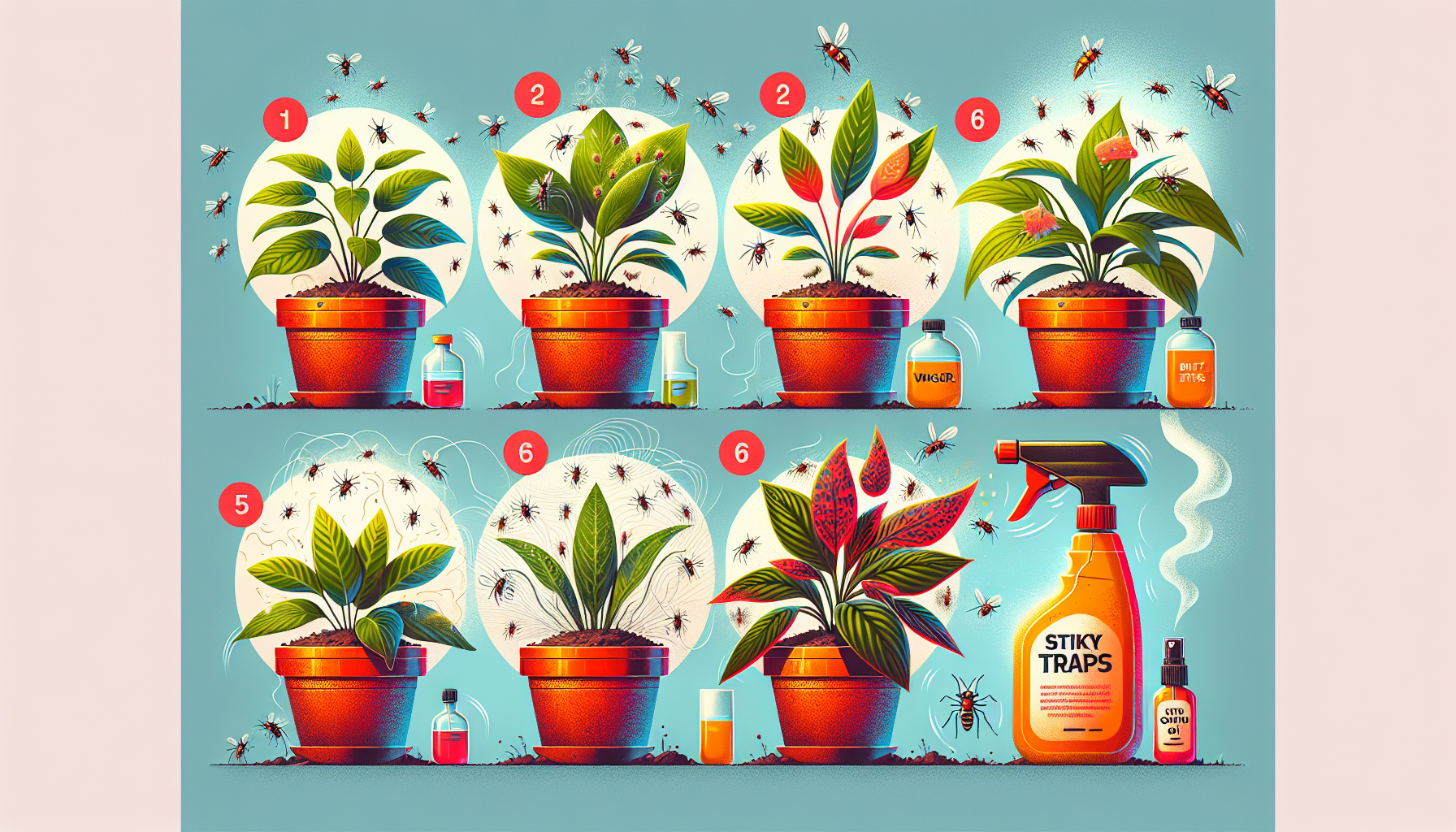Introduction
Gnats in plants can be a common nuisance for plant lovers. These tiny insects can quickly multiply and infest your indoor or outdoor plants, causing damage to the plant and annoyance for you. However, eliminating gnats from your plants doesn’t have to be a difficult task. In this article, we will discuss five easy ways to get rid of gnats in your plants and keep them healthy and thriving.
1. Use Sticky Traps
Sticky traps are a simple yet effective way to control gnat populations in your plants. These traps are coated with a sticky substance that attracts and traps gnats when they come in contact with it. Place sticky traps near your plants, especially in areas where you see a concentration of gnats. Check and replace the traps regularly to ensure effectiveness.
2. Allow the Soil to Dry Out
Gnats are attracted to moist soil, as it provides an ideal environment for them to lay their eggs and breed. To eliminate gnats, allow the soil of your plants to dry out between waterings. Avoid overwatering, and make sure your pots have proper drainage to prevent water from accumulating at the bottom. By keeping the soil dry, you can discourage gnat infestations in your plants.
3. Apply Neem Oil
Neem oil is a natural insecticide that can help eliminate gnats and other pests from your plants. Mix a few drops of neem oil with water and spray it on the soil and leaves of your plants. Neem oil not only kills gnats on contact but also acts as a deterrent, preventing future infestations. Use neem oil regularly to keep your plants gnat-free.
4. Repot Your Plants
If your plants are severely infested with gnats, consider repotting them in fresh, sterile soil. Gently remove the plant from its current pot, shake off the old soil, and inspect the roots for any signs of damage or decay. Repot the plant in a clean container with fresh soil, making sure to discard the old soil to prevent reinfestation. This can help eliminate gnats and give your plant a fresh start.
5. Clean Your Plant’s Environment
Gnats are attracted to decaying organic matter, so it’s important to keep your plant’s environment clean and free of debris. Remove dead leaves, fallen flowers, and other plant debris from the soil surface, as these can attract gnats and provide breeding grounds for them. Regularly clean the area around your plants to prevent gnats from taking up residence.
Conclusion
Dealing with gnats in your plants doesn’t have to be a constant battle. By following the five easy ways mentioned above, you can effectively eliminate gnats from your plants and prevent future infestations. Keep your plants healthy and thriving by taking proactive steps to control gnat populations and create a pest-free environment for your green friends.
